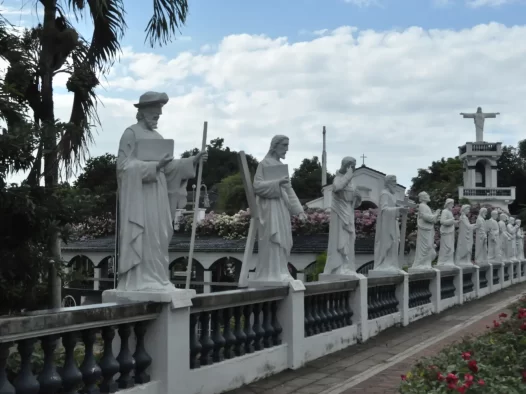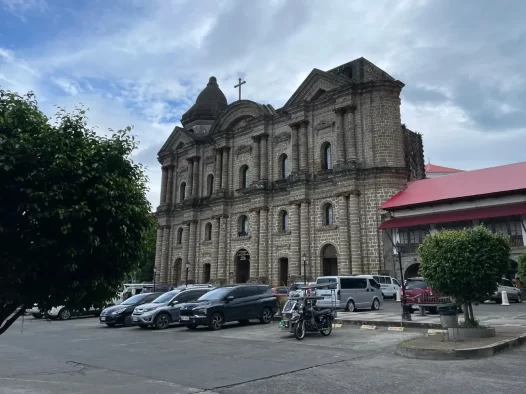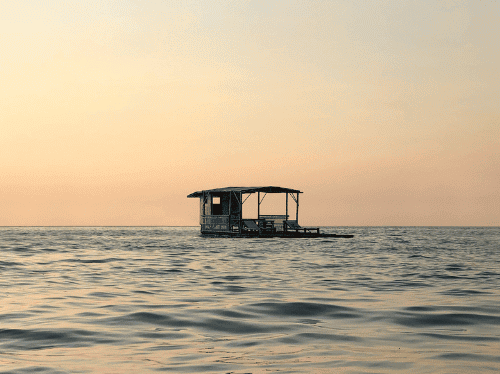Rosario
The southwestern coast of Batangas, extending towards Tayabas Bay, was dotted with scattered small communities. In the province’s hinterlands, one could find widely dispersed villages. Peaceful lives were led by the inhabitants of these coastal and mountainous regions, who, much like their fellow countrymen, shared familial ties through blood or marriage. Beyond kinship, they were united by common economic endeavors, shared beliefs, and sacred rituals. Their reverence extended to the natural wonders around them, such as trees, caves, and mountains, forming an integral part of their unique culture. The social unit of these communities was the barangay, led by a datu. These coastal settlements served as the ancestral roots of the people who would later come together to establish the town of Rosario.
History and Heritage
The first settlers of Rosario can be traced back to a parish established on the southwestern coast of Batangas, where the Rosario River flows through Lobo and near Rosario Point. This Christian settlement faced a Moro raid during the Moro wars against Spain in 1687, leading its inhabitants to flee inland for safety. The settlers, reciting the rosary for divine protection, found refuge along the Kansahayan River in Hilerang Kawayan of Taysan. They decided to settle there, giving the place its name, Rosario, which originates from their practice of reciting the rosary. Don Nicolas Morales served as their gobernadorcillo at the time.
Due to the continued threat of Moro attacks, the Dominican fathers relocated Rosario approximately one league (about 7.5 km) south of Lipa, around 1739. The devout settlers sought divine guidance during their journey and held a novena, eventually deciding to relocate the town to its new site.
Separations and changes in territorial boundaries occurred over time, with the separation of San Juan in 1848, Taysan in 1850 (later rejoining Rosario but separating again in 1918), and Lobo becoming a separate town in 1871. Rosario remained a large territory covering about one-fifth of the land area of the province of Batangas. It experienced growth, establishing a civil court, a parochial secondary school, and giving birth to two large parishes, San Juan de Bolbok in 1846 and Taysan in 1860.
During the Philippine Revolution, Rosario actively participated in the fight for independence, and in the subsequent Fil-American War, it endured considerable suffering. The town was occupied by Japanese forces during World War II, and the municipal government continued to function under pre-war officials, with Dr. Crisanto A. Gualberto leading the town through the war years. After the war, Rosario celebrated its first Independence Day of the Third Philippine Republic on July 4, 1946.
In the post-war period, Rosario faced challenges but also witnessed significant developments. Private schools, hospitals, and a regional trial court were established. Commercial and industrial activities grew, with domestic investors contributing to the town’s progress. The Batangas Racing Circuit and the grotto of Christ’s Stations of the Cross were among the notable additions. Rosario regained its 1st Class Municipality status, and trade and industry flourished, leading to increased municipal revenue.
In recent years, the town has continued to modernize, with the presence of banks, cell sites, and urban amenities. Growth areas, such as Barangay Masaya, have seen the establishment of steel plants and commercial centers. Educational institutions, including the Batangas State University extension campus and Teodoro Luansing College of Rosario, have contributed to the town’s educational landscape.
Recognizing its historical significance, Rosario celebrates June 9 as “Araw ng Rosario” annually, commemorating its foundation year and establishment in Tombol. The town’s journey reflects its resilience, growth, and contributions to the province of Batangas.
Climate
The rainy season starts in June and ends in November. When December comes, the people experienced a very cool dawn. The summer season on the month of March to the end of May.
If you prefer a hassle-free trip, you can rent a car or hire a private vehicle for more convenience and flexibility. Public transportation, such as buses and jeepneys, is also available and can be a more budget-friendly option.
Batangas: Where history, beauty, and resilience converge, creating a tapestry of captivating stories and unforgettable moments.
Sinukmani Festival
The Sinukmani Festival is a vibrant and joyous celebration held in Rosario, Batangas every June 9 honoring the town’s rich cultural heritage and its renowned local delicacy, Sinukmani. This festival showcases the deep-rooted traditions and flavors of Rosario, inviting locals and visitors to partake in a feast of music, dance, and gastronomic delights. The Sinukmani, a delectable sticky rice dessert made with coconut milk and topped with latik (caramelized coconut cream), takes center stage during this festive occasion. With colorful parades, street dances, and various culinary competitions, the Sinukmani Festival offers a captivating experience that highlights the unity, creativity, and culinary prowess of the people of Rosario.
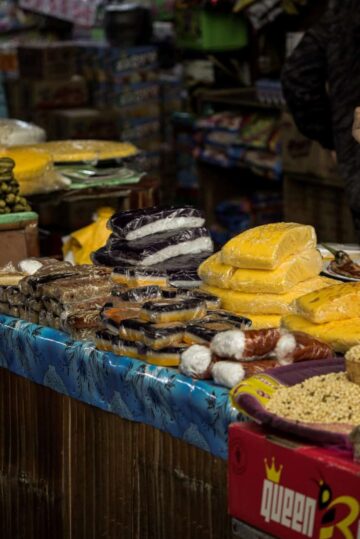


Local Attractions
Batangas in the Philippines offers a range of local attractions that cater to various interests. These are just a few of the attractions you can explore in Batangas. Whether you’re interested in history, nature, or relaxation, the city offers something for everyone.
Getting Around

Buses
Buses provide transportation for longer distances, connecting Batangas with other regions and provinces. These buses have designated terminals and offer a more comfortable option for longer journeys.

Jeepneys
Jeepneys are a staple mode of public transportation in the Philippines. They are colorful, elongated jeeps that can carry multiple passengers. Jeepneys follow specific routes and have fixed fares.
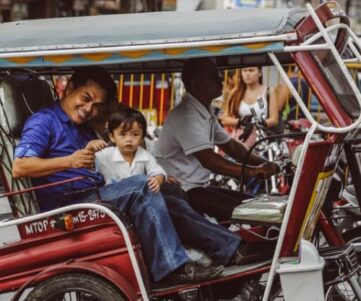
Tricycles
These motorized vehicles consist of a motorcycle with a sidecar, which can accommodate around 3 to 4 passengers. Tricycles are commonly used for short trips within the city, and fares are usually negotiable.

